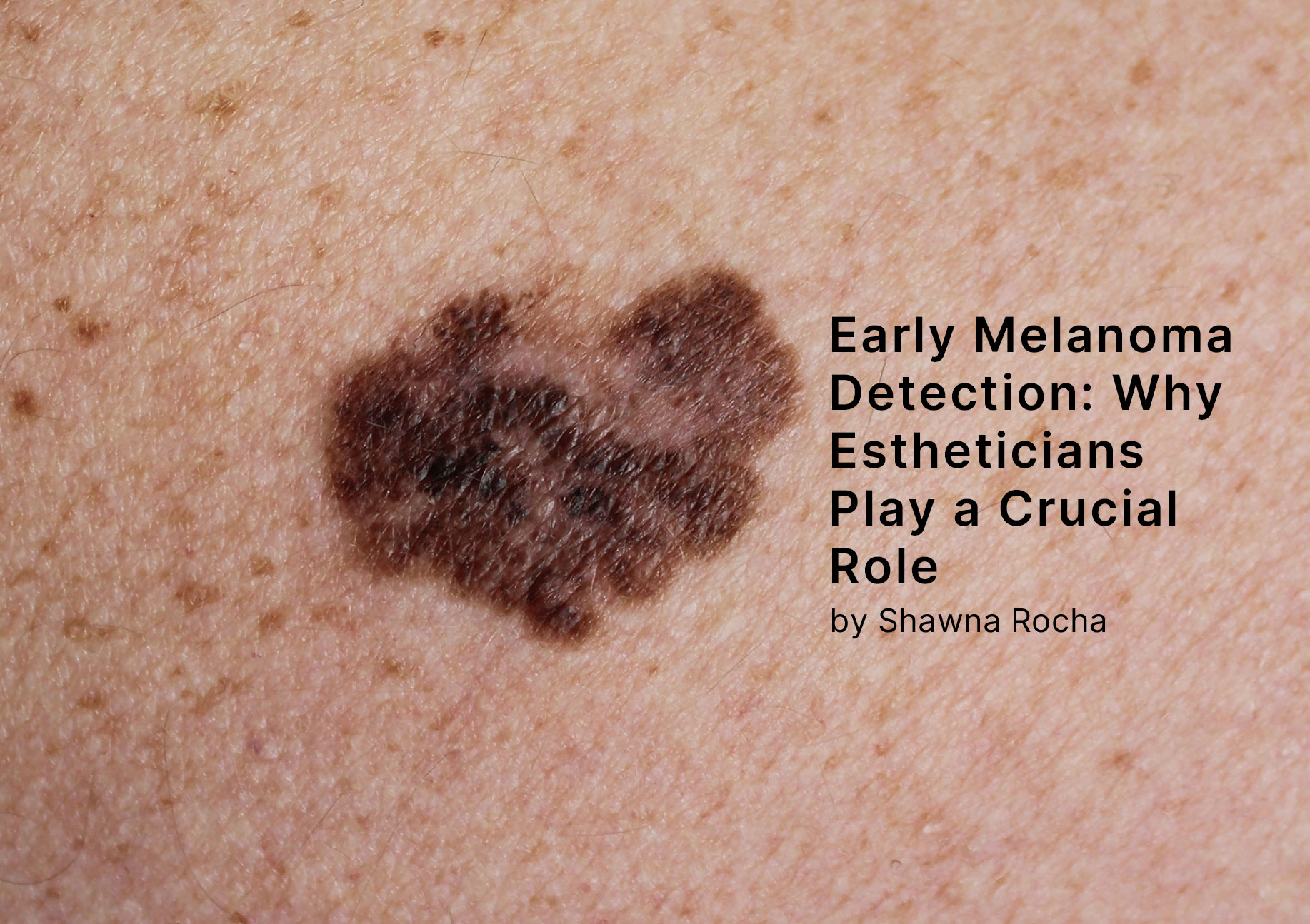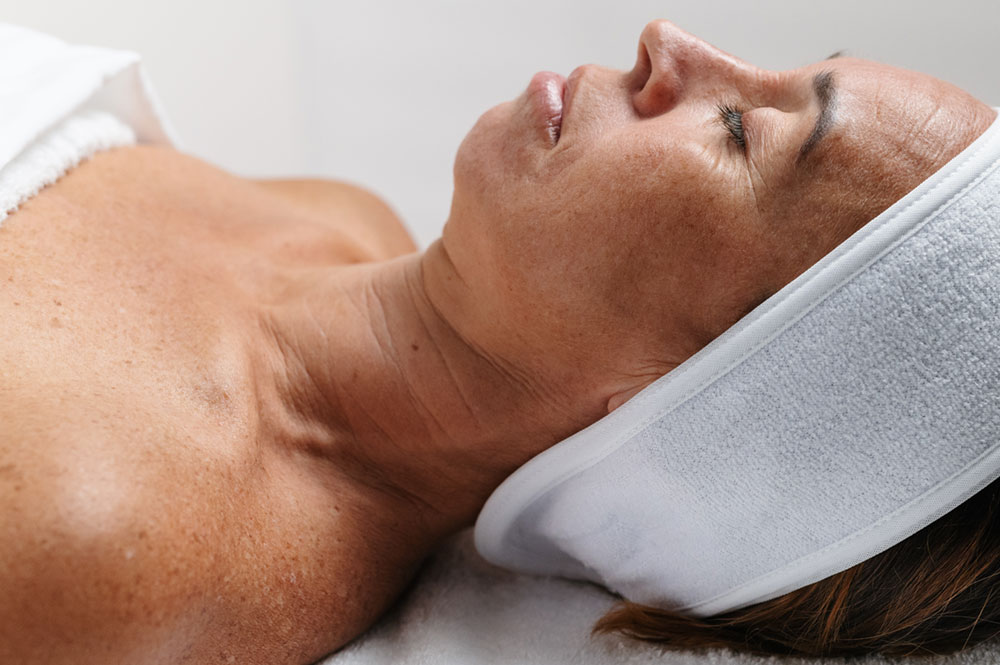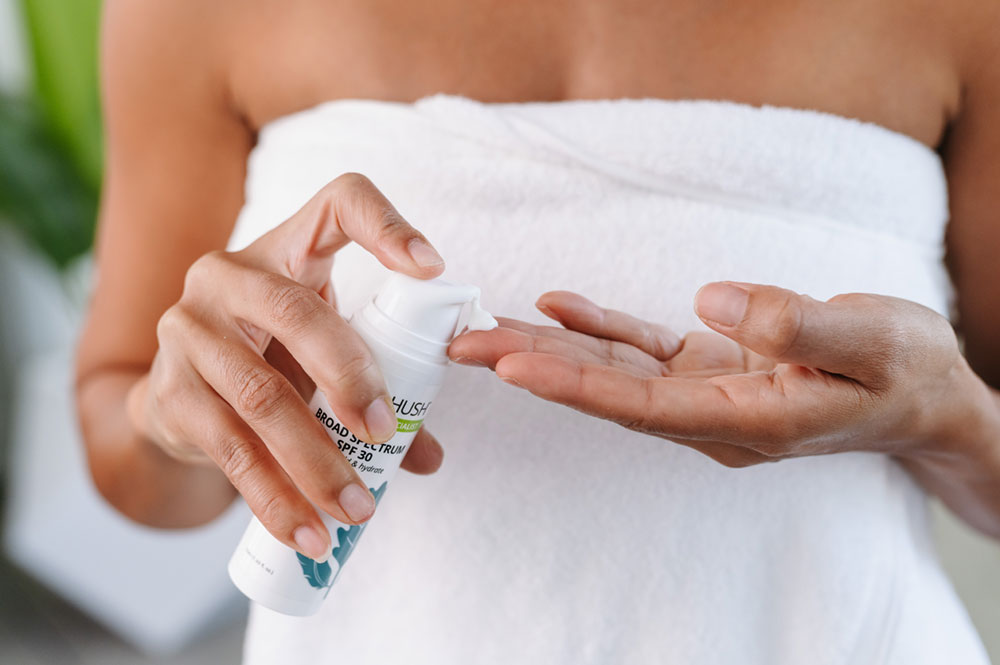
MAY 2025 MONTHLY BLOG
By Shawna Rocha
As skin care professionals, estheticians are uniquely positioned to support one of the most critical aspects of client health: early detection of melanoma. While estheticians are not medical professionals and cannot diagnose, they are often the first to notice changes or irregularities on a client’s skin that might otherwise go undetected. With May marking Melanoma Awareness Month, it’s an ideal time to focus on what melanoma is, why early detection matters, and how estheticians can handle these sensitive conversations within their professional scope.
Melanoma is the most serious type of skin cancer. It begins in melanocytes, the cells responsible for producing melanin, the pigment that gives skin its color. Though it accounts for only about 1% of skin cancer cases, it causes the majority of skin cancer-related deaths. Fortunately, when caught early, melanoma is highly treatable.
According to the Skin Cancer Foundation, the five-year survival rate for melanoma detected early is 99%. This rate drops significantly once the cancer has spread to lymph nodes or distant organs. That’s why early detection is vital—and this is where estheticians can make a difference.
Estheticians routinely examine a client’s skin up close, often in areas a client may not inspect themselves. This regular visibility creates an opportunity to notice unusual moles, changes in pigmentation, or spots that weren’t there before. While estheticians must never attempt to diagnose, they can gently alert clients to concerning features and encourage them to seek medical evaluation.

It’s important to know the ABCDEs of melanoma when observing skin:
Understanding these signs helps estheticians make informed decisions about when to refer a client to a dermatologist for further evaluation.
Skin cancer prevention begins with education—and estheticians are natural educators. Clients often trust their estheticians and look to them for skincare advice. This makes the treatment room an ideal place to talk about preventative care, such as daily sunscreen use, wearing protective clothing, and avoiding tanning beds.
Estheticians can take the lead in:
When done with compassion and confidence, these reminders reinforce the importance of skin health and establish the esthetician as a trusted wellness advocate.

One of the most important parts of addressing potential melanoma in the treatment room is staying within the boundaries of your licensure. Estheticians should never say “I think this could be cancer.” That’s a medical diagnosis and out of scope.
Instead, consider saying:
Approaching the conversation this way allows you to show care and professionalism without creating fear or stepping outside your role.
Early melanoma detection saves lives. While estheticians are not medical providers, they are often in the best position to notice the subtle signs that something might be wrong. By observing carefully, communicating appropriately, and encouraging preventative habits, estheticians can play a vital role in their clients’ well-being.
Learn more through the Impact Melanoma Skinny on Skin program. The Skinny on Skin Program is a free certification program targeting professionals who are in a unique position to spot melanomas or other possible skin cancers early.
